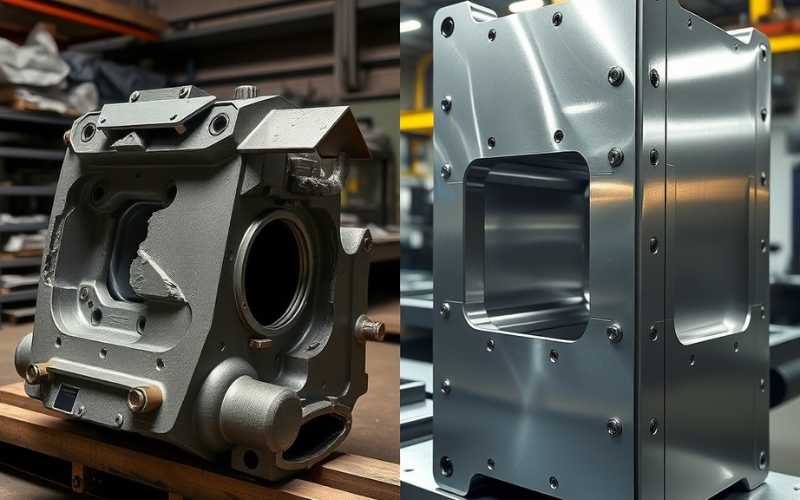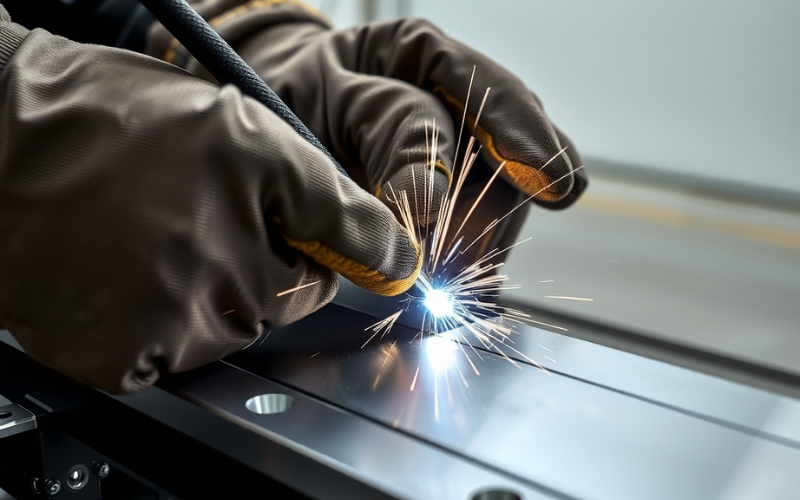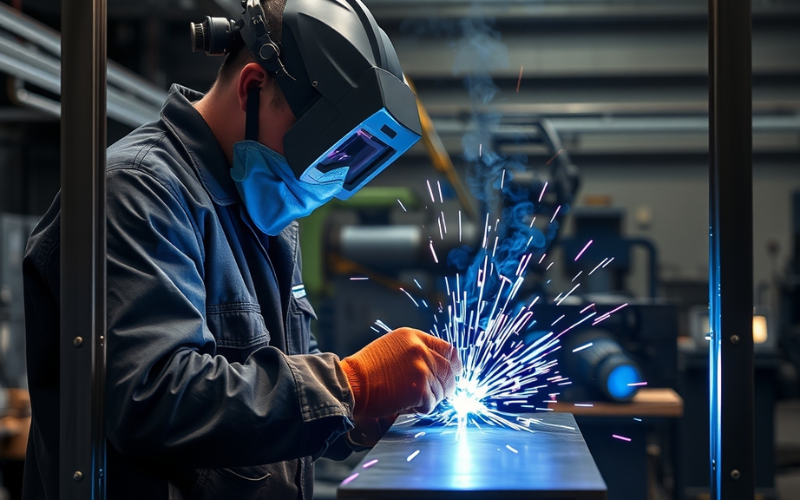Laissez Istar vous aider à démarrer votre projet avec notre expérience et notre savoir-faire !
Téléchargez vos fichiers de conception et vos exigences de production et nous vous répondrons dans les 30 minutes !

A tack weld is a little, short-term weld that keeps things from moving. In this post, I will tell you all about the small but very useful tack weld. You will find out what a tack is, why it is so important for a good weld, and how you can make a perfect tack weld each time. This will help you stop making bent projects and weak connections. It will make your whole welding process simpler and give you a better outcome. Let’s find out more about tack welding.
I like to say a tack weld is like using tape when you weld. The main reason for a tack is to keep metal parts together in the correct spot. You do this before you begin the main weld. It is a short-term welding process that locks the joint in place. When you put two pieces of metal next to each other, you want them to stay still. A good tack weld helps with this. It keeps everything lined up perfectly. Just one tack can really improve your finished welding works.
This short-term tack weld is a very important part of any welding project. If you don’t have a good tack, the strong heat from the final weld can make the metal bend or shift. I have seen this happen myself. You might think it is all straight. But after you finish the weld, the piece is all bent. Tack welding helps stop this from happening. A little tack creates a strong connection. The tack weld keeps the metal from moving during the main weld. To get a good weld, you first need to make a good tack.

The main way a tack weld is different from a final weld is its job and its size. A tack weld is a short-term fix. A tack is little. It is only made to keep things together for a little while. A final weld, however, is meant to last forever. It is the strong, long weld that gives the connection all its power. You should not count on a tack weld to hold weight. The tack is just getting things ready for the big job, which is the final weld.
Another big difference is how a tack weld gets taken into the final weld. When you weld over the tack, it melts. It then becomes a piece of the bigger weld. This is a big reason why a good tack weld matters so much. A clean and strong tack will mix in just right. A bad tack can cause issues in your final weld. It is fast and easy to make a tack. The final welding process needs a lot more time and attention. Think of a tack as a guide. The final weld is the completed path. A good tack helps you make a much better final weld.
Over time, I learned that not every tack weld is the same. Based on the job, you might need a different type of tack. There are many forms of tack welds, but I usually use these four the most. Knowing each type of tack weld will help you pick the right one for your weld.
Here are the four forms of tack welds I often use:
This is a good question people often ask me. How many tack welds are needed? The answer depends on some things. You need to think about how long the weld is, how thick the metal is, and how much the parts could move. The right number of tack welds is very important for a steady setup before you weld.
For long joints, I put a tack weld every couple of inches. This helps keep the space the same all the way down. For thicker metal, you will need a stronger tack weld or more of them. Thick metal puts more pressure on each tack. Tack welds need to be strong enough to do their job. I always check my work after the first tack. If the metal pieces can still move around, I add another tack weld. It is better to have more tack welds than not enough. Remember, every tack weld helps to support the final welding process.
An improper tack can mess up your whole day. I know this from my own mistakes. A bad tack weld could be too weak, too large, or dirty. If your tack is weak, it might break when you begin the final weld. This will make the metal parts move out of place. Then you must stop, grind it all off, and begin again. A very bad tack can make the whole weld weak.
Improper tack welding can also put problems into the weld joint. If your tack does not go deep enough or is full of holes, those problems get stuck inside your final weld. This makes a weak point. A tack weld that is too big or has excess filler metal can also be a problem. It can get in the way of your final weld and create a bad, bumpy line. It is important to avoid an improper tack. You can do this by practicing and keeping your metal clean. A little bit of care when you make a tack will save you a lot of work later.
Of course. The tack welding process is easy, but each step is key. I follow these steps to make sure I have a good, strong tack weld every time. Following a good welding procedure helps you get the same results each time.
You can create tack welds with nearly any welding process. But some are better than others for this task. The choice usually depends on the material and the careful work you need for the weld. Like other welding processes, each one has its good points for making a tack.
Like any method, there are good and bad things about using a tack weld. Knowing the pros and cons of tack welding helps you see why it is used so often. I made a simple table to show the disadvantages of tack welding and its good things. It is easy to see that the good parts of a tack are much better than the bad parts.
| Pros of a Tack Weld | Cons of a Tack Weld |
|---|---|
| Holds metal in the right position. | Adds one more step to the welding process. |
| Stops bending from the heat of the final weld. | A bad tack can cause problems in the final weld. |
| Lets you check if it fits before the final weld. | A tack weld can be hard to take off if you make a mistake. |
| Makes the final welding process much simpler. | A tack needs the same amount of skill and clean metal as a regular weld. |
The quality of the finished weld often relies on the tack welding quality is still very good. These cons of tack welding are usually because of not doing it right. A good tack weld has almost no bad sides.

Yes, there is another choice instead of tack welding, but it is not always better. You can use tools like clamps and special frames to hold metal parts in place. For some jobs, especially jobs you do over and over, a good frame is great. It can hold the pieces of metal together just right every time. You would not need a single tack weld.
But, clamps have their own issues. They can block your torch when you are trying to finish the final weld. You have to stop, move a clamp, weld some more, and do it again. A tack weld does not get in the way. It becomes part of the weld. So, while an alternative to tack welding is there, tack welding can be used to fix problems that clamps cannot. A tack weld is often the faster choice that works for many situations. Tack welding is a type of short-term clamp that is made of weld metal.
Sometimes people mix up tack welding and spot welding. The biggest difference between tack welding and spot welding is that a tack weld is a temporary welding process used to get ready for a bigger weld. A spot weld, on the other hand, is a final, lasting weld.
A tack weld uses a welding process like TIG or MIG. It often adds filler metal to make a small connection. The tack holds parts for a bigger weld that comes later. Unlike tack welding, spot welding works by sending a strong electric current through two pieces of metal on top of each other. When the electricity is slowed down, it makes heat. This heat melts the metal and joins it together in a small spot. There is no filler metal in a spot weld. A spot weld is the complete weld. A tack is just the start of a weld.
I hope this helps you learn more about tack welding. It is a basic skill. But it is one that the American Welding Society and every welder with experience will say is very important. A good weld always starts with a good tack.